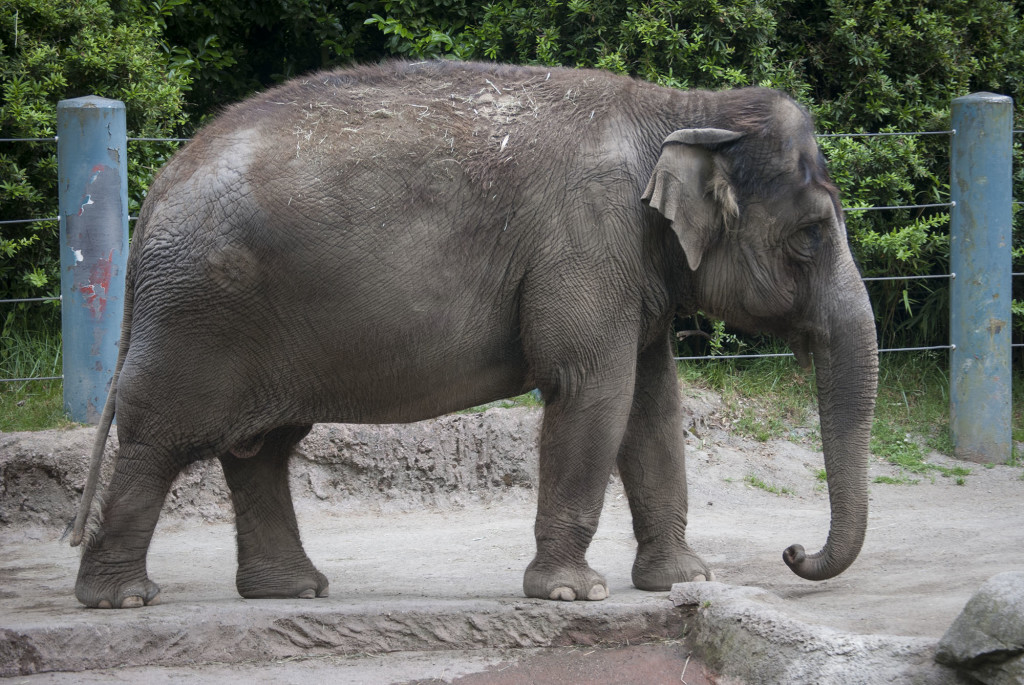It’s about time we address the elephant in the room before it leaves.
The last of the elephants at the Woodland Park Zoo are making their departure.
The two remaining elephants are Chai, 35, and Bamboo, 47, who surely deserve a retirement at their age. The animals are being sent to an Oklahoma City zoo, with a stable elephant collection and an active animal welfare program.
“Since Chai and Bamboo are herd mates, it is only natural that we transport them together,” said Woodland Park’s Public Relations manager Gigi Allianic.
In March 2014, the Elephant Task Force recommended that Woodland Park grow their Asian elephant herd, a project that would cost $3 million—half the amount the zoo receives from the city every year. Elephants require roughly $63,000 a year to maintain.
“However, after several months of trying to locate additional Asian elephants, we realized we could not do what is best for Bamboo and Chai in a reasonable time frame and so we made the difficult decision to relocate them,” Allianic said.
Woodland Park’s elephant exhibit has always had its fair share of critics.
In June 2007, 6-year-old elephant Hansa died overnight of unknown causes. This caused activists and patrons alike to raise eyebrows and become skeptical about the zoo.
This is perhaps part of the reason why animal rights activists are trying to persuade zoo officials to send Chai and Bamboo to one of the non-profit sanctuaries in the U.S. rather than another zoo.
Animal rights are a different matter than animal welfare, though.
“An animal welfarist is fine as long as animals receive food and water, while an animal rightist believes animals should be in their natural environment,” said Seattle University philosophy professor and self-proclaimed animal rightist.
Zoo officials are rejecting the idea to send the elephants to a sanctuary because of the presence of tuberculosis in some of the sanctuaries in North America.
“Even [if there were] the tuberculosis problem, the sanctuary would offer a bigger space, which would be better than the really close confines you find in zoos,”
Dombrowski said.
Woodland Park is the 25th North American zoo to shut down its elephant exhibit, following zoos in San Francisco, Detroit and Brooklyn.
Unfortunately, the declining number of elephant exhibits correlates with a declining number of elephants. In 2012, the Seattle Times conducted an investigation and found that for every elephant born in captivity, two more will die. Today, only about 280 elephants are still alive among the 228 accredited U.S. zoos.
Statistics like this are the reason that zoos have always been controversial.
“Animal rightists tend to be [skeptical] about zoos,” Dombrowski said.
The Ringling Brothers Circus recently announced that it would be phasing out elephants from shows. A New York Times report mentioned that a number of local governments in the United States have banned circuses’ use of wild animals. However, many trainers believe that Asian elephants should be considered domestic as opposed to wild because of how long people have been putting them to work.
“The debates reflect people’s growing unwillingness to accept animal treatment,” read the New York Times article.
People for the Ethical Treatment of Animals has published a number of articles surrounding the subject of the cruelty of animals kept in captivity.
They point out that animals living in zoos are deprived of what they need in their natural, wild environment. This causes them to become depressed and anxious, causing them to lose their mind. This reaction that animals have to living in captivity is called “zoochosis.”
“It would be better for animals to be in their natural habitat rather than confined in zoos,” Dombrowski said.
However, once animals are bred in captivity, it is very dangerous for them to be sent out into the wild again. When this is done, the animals are killed nearly instantly, because they have not learned the survival skills necessary to live in the wild ecosystem they originally came from while they were living in a zoo.
Zoos keep this in mind, and strive to treat their animals as humanely as possible. Woodland Park makes an effort to replicate the animals’ natural environments as closely as possible. They are also considering Chai and Bamboo’s well being even while transporting them to Oklahoma.
“Although they’ll be in individual crates, they will travel in the same truck and, therefore, can vocalize and smell each other,” Allianic said. “When they reach their new home … they will find more comfort being together in a new place than if they were alone.”
Seattle University senior Sarah Woodard agrees that this move is what is best for Chai and Bamboo.
“The important thing is that the elephants are placed in the best situation and this move keeps that in mind,” Woodard said.
According to Allianic, many in the community will miss the elephants. But it is important to remember the other exhibits the zoo has to offer.
“We have other dynamic exhibits and species,” Allianic said.
When the elephants finally stomp their way out of Seattle and to their new home, their space at Woodland Park will be reviewed and redesigned for a new Asian
animal species.
Until then, we will still be able to hear their trumpets.
Note: Close to press time, a lawsuit was filed contesting the move.
Siri may be reached at [email protected]













